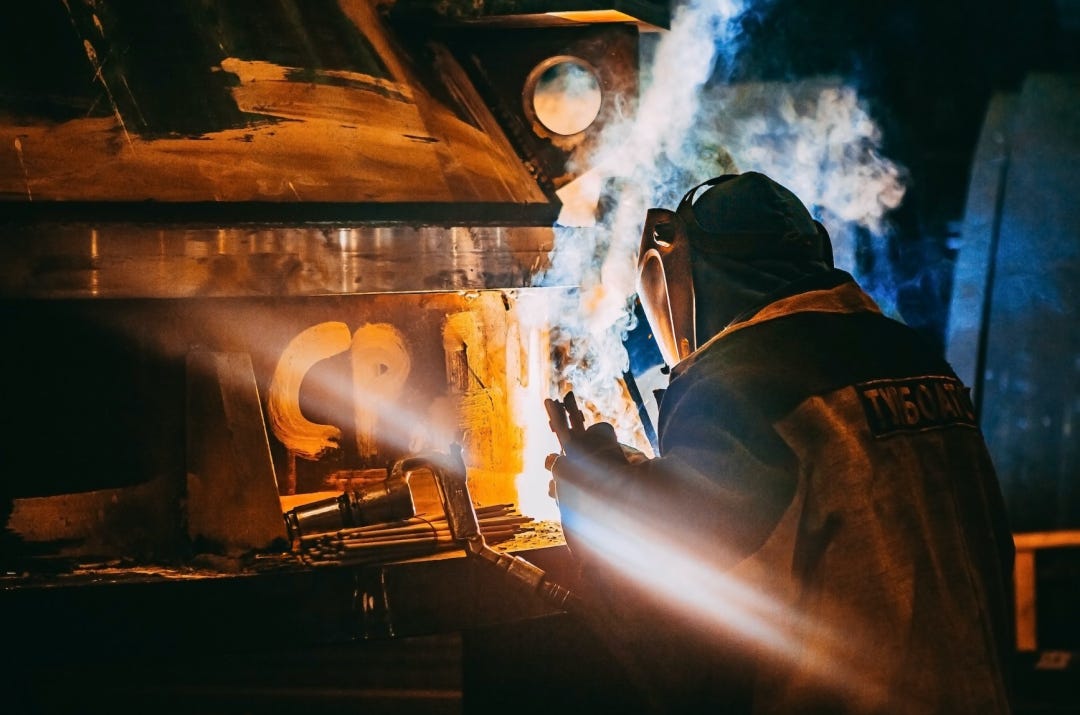Will Software + Robots Disrupt Chinese Manufacturing?
"Fifty years from now, we will laugh at ourselves, this generation that still manually assembles products. It's like how today's teenagers scoff at some values in literature from a hundred years ago." Hamilton Kay, owner of a manufacturing company in Dallas, USA, laughed as he spoke to "Reflections on the Robot Industry". His factory has just installed software that can drive automated machines to complete a series of tasks through coding instructions. The astounding and somewhat cruel thing is that these instructions are actually a summary and replication of the experience of Chinese workers. In other words, software has replaced human experience in a more precise way. In another old factory in the Ruhr region of Germany, a group of robots assembles products in an orderly manner every day. Semi-finished electric tool components in boxes move along the conveyor belt, with one robotic arm taking pictures and scanning them to check for defects, another robotic arm inserting motors into the products, and a third robotic arm responsible for screwing. The entire production line is mainly controlled by software and only requires seven human employees to manage, producing 150 electric tools per hour. The Chinese assembly line it replaced required up to 120 workers and could produce no more than 98 units per hour. "We have reduced our supply chain cooperation in China. This has nothing to do with anything else, just cost considerations," emphasized Louis, the factory owner, to "Reflections on the Robot Industry".
Today, more and more companies around the world are cautiously trying the "software-defined manufacturing system" model in order to design and produce sophisticated and complex products more quickly. This innovation will undoubtedly become an important part of the highly anticipated digital revolution and AI-enabled industrial wave in recent years.
What is more significant is that although brands and factories using software to empower product manufacturing is not something new, and robots have long been used in the production and manufacturing of many industries, the discussion of this topic now carries a new era of significance as Western companies seek to break free from the Chinese supply chain. The vigorous development of artificial intelligence seems to give those who advocate for decoupling between China and the West more confidence. In the past, when discussing such topics, Chinese supporters would point out that even if those globalized companies moved their factories and research centers to Vietnam, Mexico, or India, these places do not have the same complete supporting facilities, policies, and cost-effective employees as China. However, if as mentioned above, human factories no longer require complex hardware facilities and a large number of manpower, then what advantages does China still have?
Before further exploring this complex issue, let's take an example and see how traditional global collaboration manufactures electric tools (of course, it should be noted that not all products follow this production model). First, the product design team of the brand in Italy proposes a product concept based on the boss's preferences and market research conclusions. Then, the product design requirements are handed over to the cooperating factory in China, and both parties hold meetings to discuss and make product prototypes, constantly adjusting until production. Finally, the product undergoes market testing, generating new functional adjustment requirements... This product manufacturing model has been used for many years, and of course, it has its reasons and value. However, the entire process is also filled with selfishness, arguments, chaos, and irresponsibility.
For example, designers often believe that the factory lacks the ability to implement designs, while marketing departments tend to think that product design and production teams do not understand the market. What is even more ridiculous is that many times, a company's decision on what products to make is entirely based on the boss's whim. Fortunately, most consumers are not aware of this, otherwise, they would definitely not be satisfied. When production is controlled by software rather than humans, everything changes. By connecting the design side and the manufacturing side through software, efficiency and economies of scale can be greatly improved. Designers can be confident in envisioning new products that can be accurately and mass-produced by machines because all the details on the production line are encoded in CAD programs. These programs are directly connected to automated machines or robots. Therefore, if a product design can operate in digital simulation, it may be realized on the production line. Currently, the most successful representative of this new model is the semiconductor industry. Massive machines can etch circuits a few nanometers wide onto silicon wafers. Chip designers from Apple, Nvidia, Qualcomm draw circuits using dedicated programs and then send the design documents to foundries like TSMC for production.
In fact, not only production and manufacturing, the entire factory can be controlled by software. Siemens in Germany has made such attempts: designers build factories in software to simulate the production process of new products in a virtual environment called digital twin, and then start manufacturing in the physical environment. Of course, popularization is not easy. It involves technical robustness, marketization progress, as well as a series of complex issues such as people, tradition, and geopolitical relations.
For example, it is almost impossible to implement digitization in a traditional family-owned factory because the workers are accustomed to doing things as they please, and they would not accept sudden process supervision and meticulous operations. Not to mention how huge the cost burden of using software and robots is for the company.
Now, we can return to the question above: for those companies that are increasingly concerned about relying on Chinese manufacturers, "software-defined manufacturing" makes it possible for production to return from the East. Because with the advancement of technological capabilities, how to produce will depend on who masters cutting-edge technological capabilities, rather than who has land and manpower.
Of course, one trend that has emerged is that Chinese companies are continuously going global, trying to cover markets in third world countries and compete with companies from all over the world on a global scale. The issue mentioned in this article reflects the complexity of today's world: technology, suspicion, cost, security, and other factors are closely intertwined, many old topics have new connotations, and many new issues are gradually emerging, making the future of mankind increasingly uncertain. Predicting the next five years is much more difficult than when globalization was flourishing.
However, one thing is certain: the combination of software and robots will undoubtedly be the benchmark of advanced manufacturing productivity. Those who can achieve integrated innovation related to it will be able to grasp the future of intelligent manufacturing and even gain a strategic advantage in the geopolitical and economic competition.





